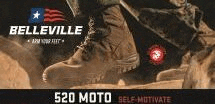In the spirt of last minute Christmas gifts. The SCUABPRO A2 dive watch was developed for all levels of divers, from beginners to advanced, technical and working divers. The A2 offers full timekeeping functions and a Sport mode. When it’s time to go diving, the A2 provides everything a diver wants and everything a technical diver needs. It starts with wireless air integration that monitors tank pressure and provides true remaining bottom time. The digital tilt-compensated compass offers easy navigation underwater or on the surface. The A2 lets you choose from six Dive Modes, including Trimix and Closed-Circuit Rebreather, and because it’s designed with Human Factor Diving, it incorporates cutting edge biometrics that enables you to live your life in dive mode.

With advanced, technical, CCR, and freedivers in mind, Smart technology wireless air-integration can handle multiple transmitters. Optional air-integration monitors tank pressure and provides true remaining bottom time (RBT) calculations based on the workload from breathing (transmitter sold separately). The Heart rate monitor records your heartbeat and skin temperature (with SCUBAPRO HRM Belt only; sold separately) that can be factored into the decompression calculation along with workload. Digital tilt-compensated 3D compass allows for easy navigation. Predictive Multi-Gas ZH-L16 ADT MB algorithm accommodates eight gases (21-100% O2) plus two in CCR mode. PDIS (Profile Dependent Intermediate Stops) calculates an intermediate stop based on N2 loading, current, and previous dives and breathing mixes for safer diving. Microbubble levels let you adjust the level of conservatism in the algorithm to match your experience level, age, and physical conditioning.

Multiple Dive Modes: Scuba, Gauge, Apnea, Trimix, side mount, CCR. Sport mode offers sport-related functions like a swim stroke counter, activity counter (pedometer), and stopwatch. High-resolution matrix display with large numbers is easy to read underwater, even in adverse conditions. Lightweight design is so comfortable on the wrist you won’t want to take it off. Intuitive menu and four-button controls make it easy to navigate through the system. Bluetooth Low Energy interface lets you download dives to any iOS or Android device or PC/Mac. Firmware can be user-updated by going to scubapro.com. Power is provided by a standard CR2450 battery that is rated for up to two years/300 dives. The computer’s maximum operating depth is 394′ (120m) and is altitude adjustable from sea level to approximately 13,300′ (4,000m). Included with the computer are a protection foil, quick card, arm strap extension, read first (the user manual is available online)—optional equipment: transmitter, heart rate belt.

SCUBAPRO Aladin A2 Dive Watch Wrist Computer:
• Compactness & Convenience of Wrist-Style Dive Computer
• Versatile Wristwatch-Style Computer: Worn-On-the-Surface As-Well-As-Underwater
• Full Timekeeping Functions, 6-Dive Modes Plus Sport Mode
• Features & Functions Enable You to Excel-In-Your Sport
• Everything Advanced Recreational Divers Want, & Everything Technical Divers Need
Optional:
Wireless Air Integration Monitors Tank Pressure & Provides True Remaining Bottom Time (RBT)
• Digital Tilt-Compensated 3D Compass Allows for Easy Navigation, Underwater & On Land
• Algorithm: Predictive Multi-Gas ZH-L16 ADT MB
• Accommodates 8-Gases (21-100% O2) Plus 2-In CCR Mode
Intuitive Menu System:
Clearly Marked Button Controls
Easy to Access & Understand All Functions
Just-the-Right Balance of Topside Features, Underwater Functions & Ease of Use
4-Button Controls
Easy to Navigate Thru-System
• Quickly Becomes an Integral Part of Your Diving Life & Everyday Life-As-Well
PDIS (Profile Dependent Intermediate Stops):
Calculates Intermediate Stop
Based-On N2 Loading
Current & Previous Dives
Breathing Mixes for Better Diving
• Microbubble Levels Let You Adjust Level of Conservatism In Algorithm
• Multiple Dive Modes: Scuba, Gauge, Apnea, Trimix, Side Mount, CCR
• Sport Mode: Sport-Related Functions, Swim Stroke Counter, Stopwatch Can-Be-Activated
SCUBAPRO Sunday is a weekly feature focusing on maritime equipment, operations and history.





















































































































